
Interstellar travel is the hypothetical travel of spacecraft from one star system, solitary star, or planetary system to another. Interstellar travel is expected to prove much more difficult than interplanetary spaceflight due to the vast difference in the scale of the involved distances. Whereas the distance between any two planets in the Solar System is less than 55 astronomical units (AU), stars are typically separated by hundreds of thousands of AU, causing these distances to typically be expressed instead in light-years. Because of the vastness of these distances, non-generational interstellar travel based on known physics would need to occur at a high percentage of the speed of light; even so, travel times would be long, at least decades and perhaps millennia or longer.
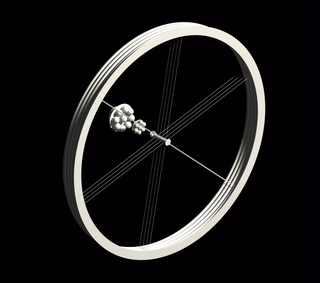
A generation ship, generation starship or world ship, is a hypothetical type of interstellar ark starship that travels at sub-light speed. Since such a ship might require hundreds to thousands of years to reach nearby stars, the original occupants of a generation ship would grow old and die, leaving their descendants to continue traveling.
CoDominium is a series of future history novels written by American writer Jerry Pournelle, along with several co-authors, primarily Larry Niven.
The concept of self-replicating spacecraft, as envisioned by mathematician John von Neumann, has been described by futurists and has been discussed across a wide breadth of hard science fiction novels and stories. Self-replicating probes are sometimes referred to as von Neumann probes. Self-replicating spacecraft would in some ways either mimic or echo the features of living organisms or viruses.

Homeward Bound (2004) is a science fiction and alternate history novel by Harry Turtledove. It is the eighth and final work in his Worldwar series fictional universe. It follows the events of the Colonization trilogy and gives some closure to the storylines.
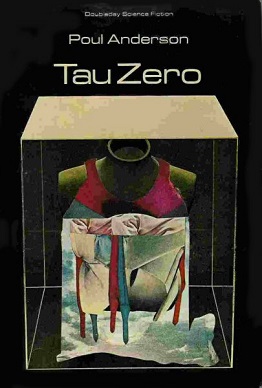
Tau Zero is a hard science fiction novel by American writer Poul Anderson. The novel was based upon the short story "To Outlive Eternity" appearing in Galaxy Science Fiction in 1967. It was first published in book form in 1970. The book is a quintessential example of "hard sci-fi", as its plot is dominated by futuristic technology grounded in real physics principles. It was nominated for the Hugo Award for Best Novel in 1971.

Pluto has appeared in fiction as a setting since shortly after its 1930 discovery, albeit infrequently. It was initially comparatively popular as it was newly discovered and thought to be the outermost object of the Solar System and made more fictional appearances than either Uranus or Neptune, though still far fewer than other planets. Alien life, sometimes intelligent life and occasionally an entire ecosphere, is a common motif in fictional depictions of Pluto. Human settlement appears only sporadically, but it is often either the starting or finishing point for a tour of the Solar System. It has variously been depicted as an originally extrasolar planet, the remnants of a destroyed planet, or entirely artificial. Its moon Charon has also appeared in a handful of works.

Mundane science fiction (MSF) is a niche literary movement within science fiction that developed in the early 2000s, with principles codified by the "Mundane Manifesto" in 2004, signed by author Geoff Ryman and "The Clarion West 2004 Class". The movement proposes "mundane science fiction" as its own subgenre of science fiction, typically characterized by its setting on Earth or within the Solar System; a lack of interstellar travel, intergalactic travel or human contact with extraterrestrials; and a believable use of technology and science as it exists at the time the story is written or a plausible extension of existing technology. There is debate over the boundaries of MSF and over which works can be considered canonical. Rudy Rucker has noted MSF's similarities to hard science fiction and Ritch Calvin has pointed out MSF's similarities to cyberpunk. Some commentators have identified science fiction films and television series which embody the MSF ethos of near-future realism.
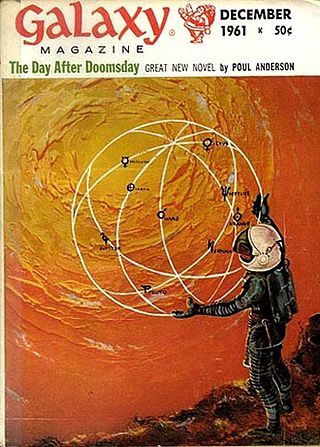
After Doomsday is a science fiction novel by American writer Poul Anderson. It was published as a complete novel in 1962, having been serialized as The Day after Doomsday in the magazine Galaxy, between December 1961 and February 1962.
Stars outside of the Solar System and their planets have been featured as settings in works of fiction. Most of these fictional stars and planets do not vary significantly from the Sun and Earth, respectively. Exceptions include anthropomorphized stars and planets with sentience, planets without stars, and planets in multiple-star systems where the orbital mechanics can lead to exotic day–night or seasonal cycles. Besides systems of fictional stars, several real ones have also made appearances in fiction, with the nearest one—Alpha Centauri—receiving particular attention.
A starship is a theoretical vehicle for interstellar travel.

To the Stars is a science fiction novel by American writer L. Ron Hubbard. The novel's story is set in a dystopian future, and chronicles the experiences of protagonist Alan Corday aboard a starship called the Hound of Heaven as he copes with the travails of time dilation from traveling at near light speed. Corday is kidnapped by the ship's captain and forced to become a member of their crew, and when he next returns to Earth his fiancée has aged and barely remembers him. He becomes accustomed to life aboard the ship, and when the captain dies Corday assumes command.
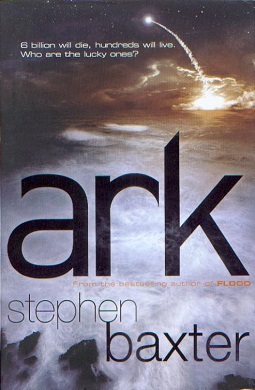
Ark is a 2009 hard science fiction novel by English author Stephen Baxter. It is a sequel to his 2008 novel Flood. Ark deals with the journey of the starship Ark One, and the continuing human struggle for survival on Earth after the catastrophic events of Flood. The series continues in three pendant stories, which are described in the plot summary below.
Space travel under constant acceleration is a hypothetical method of space travel that involves the use of a propulsion system that generates a constant acceleration rather than the short, impulsive thrusts produced by traditional chemical rockets. For the first half of the journey the propulsion system would constantly accelerate the spacecraft toward its destination, and for the second half of the journey it would constantly decelerate the spaceship. Constant acceleration could be used to achieve relativistic speeds, making it a potential means of achieving human interstellar travel. This mode of travel has yet to be used in practice.
The 100 Year Starship project (100YSS) was a one-year joint U.S. Defense Advanced Research Projects Agency (DARPA) and National Aeronautics and Space Administration (NASA) effort "to take the first step in the next era of space exploration—a journey between the stars". The study explored development of a viable and sustainable model for persistent, long-term, private-sector investment into the myriad of disciplines needed to make interstellar space travel practicable and feasible. The goal was to examine what it would take — organizationally, technically, sociologically and ethically — to develop the ability to send humans to another star within 100 years. The study culminated in a $500,000 grant awarded to a consortium under the lead of the Dorothy Jemison Foundation for Excellence, which led to the creation of an independent organization inheriting the name 100 Year Starship from DARPA. Annual 100YSS symposia were organized from 2011 to 2015, and again in 2023.

Breakthrough Starshot is a research and engineering project by the Breakthrough Initiatives to develop a proof-of-concept fleet of light sail interstellar probes named Starchip, to be capable of making the journey to the Alpha Centauri star system 4.34 light-years away. It was founded in 2016 by Yuri Milner, Stephen Hawking, and Mark Zuckerberg.

Project Hail Mary is a 2021 science fiction novel by American novelist Andy Weir. Set in the near future, it centers on school-teacher-turned-astronaut Ryland Grace, who wakes up from a coma afflicted with amnesia. He gradually remembers that he was sent to the Tau Ceti solar system, 12 light-years from Earth, to find a means of reversing a solar dimming event that could cause the extinction of humanity.
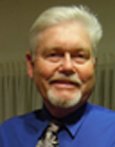
James Nelson Benford is an American physicist, High-Power Microwave (HPM) scientist, book author, science-fiction writer, and entrepreneur, best known for introducing novel technological concepts and conjectures related to the exploration of outer space, among these the design of laser-driven sailships, the possible use of co-orbital objects by alien probes to spy on earth, and the appraisal of technical and safety issues associated with the Search for Extraterrestrial Intelligence (SETI). He was born in Mobile, Alabama in 1941, as was his twin brother, science-fiction author Greg Benford. He has two children, the eldest being Dominic Benford, an astrophysicist and the Program Scientist for the Nancy Grace Roman Space Telescope.












